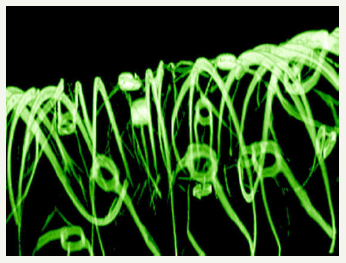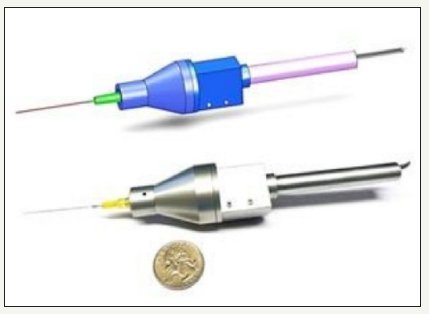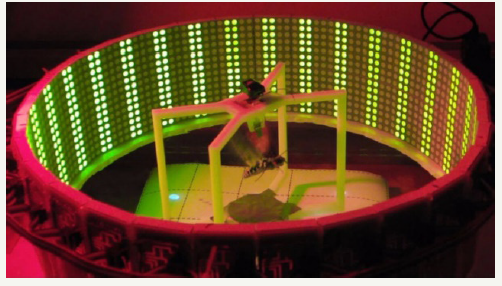- Submissions

Full Text
COJ Electronics & Communications
Advances in Cybernetics Technology
Manu Mitra*
Department of Electrical Engineering, USA
*Corresponding author: Manu Mitra, Department of Electrical Engineering, Bridgeport, USA
Submission: January 10, 2019;Published: January 23, 2019

ISSN 2640-9739 Volume1 Issue4
Introduction
Cybernetics is an interdisciplinary study of regulatory systems, their structures, constraints and possibilities. Cybernetics was defined by Norbert Wiener in 1948 as “the scientific study of control and communication in living organism and the machine”. Cybernetics study includes but not limited to artificial learning, adaptation, cognition, convergence, social control, efficacy, efficiency, connectivity and communication [1]. It is known from science fiction; technically modified organism with exceptional skills called as cyborgs -it was originated from the term “cybernetic organism”. As a matter of fact, cyborgs that incorporates technical systems with living organism are already reality. For instance, smart machines that spontaneously operate to changing dynamic conditions, computer supported designs and fabrication based on magnetic tomography datasets or surface modifications for enhanced tissue integration that allowed major development in cybernetics technology [2,3].
Cyborg Cockroach may Someday Save your Life
Researchers at University of Connecticut have used a decade to study and understand the ways of live insects to very tiny computer hardware so that they can maneuver an insect’s movements. Such research is of interest to US Department of Defense for search and rescue operations. One of the novel methods of neuro-controller microcircuit designed at University of Connecticut is part of a tiny electronic ‘backpack’ that can adhere to the insect with its wires connected to the insect’s antennae lobes. By transmitting slight electrical charges to neural tissue in the insect antenna lobe, controller can trick the insect into thinking it has detected an obstruction, causing to move in another direction. A charge transmitted to right antenna makes cockroach move left and charge transmitted to left antenna makes it move right.
A custom designed controller’s values come in the form of an unconventional 9-axis inertial calculation unit inside the device that tracks insect’s linear and rotational acceleration; it analyzes its compass heading and detects ambient temperature surrounding the insect. Various tests have concluded that ambient temperature may have an impact on insects [4]. Figure 1 Illustrates a neuro controller ‘cyborg’ cockroach created at University of Connecticut could provide more precise operation of micro bio robots, such as use in search and rescue missions inside collapsed buildings. Image Credit: Image courtesy of Abhishek Dutta/UConn [4].
Figure 1:A neuro controller ‘cyborg’ cockroach created at University of Connecticut could provide more precise operation of micro bio robots, such as use in search and rescue missions inside collapsed buildings. Image Credit: Image courtesy of Abhishek Dutta/UConn [4].

Integration of Living Muscles into Robots
Figure 2:Object manipulations performed by the bio hybrid robots. Image Credit: Shoji Takeuchi, Institute of Industrial Science, The University of Tokyo [6].

Scientists have created a new and novel technique of developing whole tissues from hydrogel sheets imbued with myoblasts. They assimilated these tissues as antagonistic pairs into a bio hybrid robot which was successfully accomplished in manipulations of objects. This novel method approach overcame earlier boundaries of a short functional life of the tissues and their ability, paving the way for advanced bio hybrid robots [5,6]. Figure 2 Illustrates Object manipulations performed by the bio hybrid robots. Image Credit: Shoji Takeuchi, Institute of Industrial Science, the University of Tokyo [6].
Cyborg Tissues
Scientists with collaboration with various other organization have implemented a novel kind of “cyborg” muscle by integrating a three-dimensional network and bio-compatible nanoscale strands into engineered human tissues. This investigation analysis addresses a worry that has been long associated with bio-engineered tissue-to create method capable of sensing chemical and electrical changes in the tissue after it has been grown and implanted. This method might also represent a solution to scientist’s struggles in developing various techniques to directly stimulate engineered tissues and calculate cellular reactions.
Implementing automatic central nervous system as a motivation, researcher’s created mesh-like networks of nanoscale silicon strands that is about 30 to 80nm in diameter shaped like flat planes in a reticular conformation [7,8]. Figure 3 Illustrates a 3-D reconstructed confocal fluorescence micrograph of a tissue scaffold. Image Credit: Charles M Lieber & Daniel S Kohane [8].
Figure 3:A 3-D reconstructed confocal fluorescence micrograph of a tissue scaffold. Image Credit: Charles M. Lieber and Daniel S. Kohane [8].

Cyborg Surgeon
Even most highly skilled and steady surgeons experience minimal tremors when completing very delicate tasks. Usually, these infinitesimals are insignificant, but surgeons and physician specializing in fine scale surgery, for instance operating inside the human eye or repairing microscopic nerve fibers; freehand agitation can pose a serious risk for patients. By harnessing a specialized optical fiber sensor, a new robotic surgical tool can compensate for this unnecessary movements. It also makes hundreds of precise position corrections each second fast enough to keep physicians’ hand on the target [9,10]. Figure 4 Illustrates the CAD model and prototype of the fiber-optic-sensor-based microsurgical tool, SMART. Image Credit: Courtesy Cheol Song, Johns Hopkins University [10].
Cyborg Moths-Bio Bots
Scientists have created a new technique that can manipulate the flight muscles of moths electronically for monitoring the electrical signals use to control those muscles. By attaching electrodes to the tissue groups which is responsible for a moth’s flight. Researchers were able to monitor electromyographic signals. The moth is connected to a wireless stage that collects electromyographic data as the moth moves its wings. This work opens the development of remote-controlled bio bots for use of emergency [11,12]. Figure 5 Illustrates Scientists have created novel method for electronically manipulating the flight muscles of moths and monitoring the electrical signals moths use to control those muscles. Image Credit: Alper Bozkurt [12].
Figure 4:The CAD model and prototype of the fiber-opticsensor- based microsurgical tool, SMART. Image Credit: Courtesy Cheol Song, Johns Hopkins University [10].

Figure 5:Scientists have created novel method for electronically manipulating the flight muscles of moths and monitoring the electrical signals moths use to control those muscles. Image Credit: Alper Bozkurt [12].

Acknowledgment
Author would like to thank Prof Navarun Gupta, Prof Hassan Bajwa, Prof Linfeng Zhang and Prof Hmurcik for their academic support. Author also thanks anonymous reviewers for their comments.
References
- Cybernetics. Wikipedia.
- Giselbrecht S, Rapp BE, Niemeyer CM (2013) Chemistry of cyborgs-to link technical systems with living things. Applied Chemistry 125(52): 14190-14206.
- Karlsruhe Institute of Technology (2014) The cyborg era has started. ScienceDaily, USA.
- University of Connecticut (2018) A cyborg cockroach could someday save your life: scientists neuro-controller could improve performance of micro biobots. ScienceDaily, USA.
- Morimoto Y, Onoe H, Takeuchi S (2018) Biohybrid robot powered by an antagonistic pair of skeletal muscle tissues. Science Robotics 3(18): eaat4440.
- Institute of Industrial Science, The University of Tokyo (2018) Cometh the cyborg: Improved integration of living muscles into robots. ScienceDaily, USA.
- Tian B, Liu J, Dvir T, Jin L, Jonathan H (2012) Macroporous nanowire nanoelectronic scaffolds for synthetic tissues. Nature Materials.
- Harvard University (2012) Cyborg tissues: merging engineered human tissues with bio-compatible nanoscale wires. ScienceDaily, USA.
- Song C, Gehlbach PL, Kang JU (2012) Active tremor cancellation by a smart handheld vitreoretinal microsurgical tool using swept source optical coherence tomography. Optics Express 20(21): 23414-23421.
- Optical Society of America (2012) Cyborg surgeon: hand and technology combine in new surgical tool that enables superhuman precision. ScienceDaily, USA.
- Verderber A, McKnight M, Bozkurt A (2014) Early metamorphic insertion technology for insect flight behavior monitoring. Journal of Visualized Experiments 89: e50901.
- North Carolina State University (2014) Paving the way for cyborg moth Biobots. ScienceDaily, USA.
© 2019 Manu Mitra. This is an open access article distributed under the terms of the Creative Commons Attribution License , which permits unrestricted use, distribution, and build upon your work non-commercially.
 a Creative Commons Attribution 4.0 International License. Based on a work at www.crimsonpublishers.com.
Best viewed in
a Creative Commons Attribution 4.0 International License. Based on a work at www.crimsonpublishers.com.
Best viewed in 







.jpg)






























 Editorial Board Registrations
Editorial Board Registrations Submit your Article
Submit your Article Refer a Friend
Refer a Friend Advertise With Us
Advertise With Us
.jpg)






.jpg)














.bmp)
.jpg)
.png)
.jpg)










.jpg)






.png)

.png)



.png)






